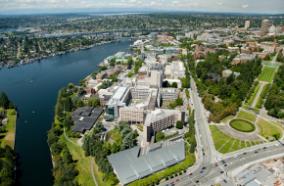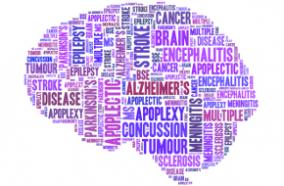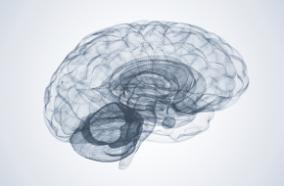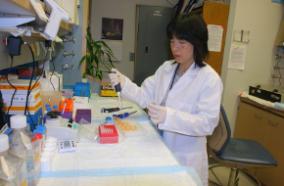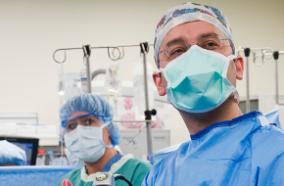4 years 7 months ago
Cardiomyocyte (CM) maturation is the transformation of differentiated fetal CMs into adult CMs that involves changes in morphology, cell function and metabolism, and the transcriptome. This process is, however, incomplete and ultimately arrested in pluripotent stem cell-derived CMs (PSC-CMs) in culture, which hinders their broad biomedical application. For this reason, enormous efforts are currently being made with the goal of generating mature PSC-CMs. In this review, we summarize key aspects...
Sean A Murphy
4 years 7 months ago
CONCLUSION: Adopting an efficient model of extended-release naltrexone initiation could result in extended-release naltrexone and buprenorphine-naloxone being of comparable economic value from the health-care sector perspective over 24-36 weeks for patients seeking treatment for opioid use disorder at an inpatient detoxification facility.
Sean M Murphy
4 years 7 months ago
CONCLUSIONS: Clarifying the purpose and use of routine firearm access assessment, contextualizing firearm questions within injury prevention broadly, and addressing misconceptions about suicide prevention may help encourage disclosure of firearm access and increase the patient centeredness of this practice.
Julie E Richards
4 years 7 months ago
Substance use disorders (SUDs) commonly co-occur with mental illness. However, the ongoing addiction crisis raises the question of how opioid use disorder (OUD) impacts healthcare utilization relative to other SUDs. This study examines the utilization patterns of patients with major depressive disorder (MDD) and: (1) co-occurring OUD (MDD-OUD); (2) a co-occurring SUD other than OUD (MDD-NOUD); and (3) no co-occurring SUD (MDD-NSUD). We analyzed electronic health records (EHRs) derived from...
Veer Vekaria
4 years 7 months ago
CONCLUSIONS: Early multiple organ dysfunction following moderate-severe traumatic brain injury is common and independently impacts multiple domains (mortality, function, and disability) over the year following injury. Further research is necessary to understand underlying mechanisms, improve early recognition, and optimize management strategies.
Vijay Krishnamoorthy
4 years 7 months ago
Lung cancer is the leading cause of cancer mortality worldwide and KRAS is the most commonly mutated gene in lung adenocarcinoma (LUAD). The 78-kDa glucose-regulated protein GRP78/BiP is a key endoplasmic reticulum chaperone protein and a major pro-survival effector of the unfolded protein response (UPR). Analysis of the Cancer Genome Atlas database and immunostain of patient tissues revealed that compared to normal lung, GRP78 expression is generally elevated in human lung cancers, including...
Daisy Flores Rangel
4 years 7 months ago
Angiosarcoma is an aggressive malignancy of endothelial cells that carries a high mortality rate. Cytotoxic chemotherapy can elicit clinical responses, but the duration of response is limited. Sequencing reveals multiple mutations in angiogenesis pathways in angiosarcomas, particularly in vascular endothelial growth factor (VEGFR) and mitogen-activated protein kinase (MAPK) signaling. We aimed to determine the biological relevance of these pathways in angiosarcoma. Tissue microarray consisting...
Michael J Wagner
4 years 7 months ago
Pseudomonas aeruginosa is a ubiquitous opportunistic pathogen that causes considerable human morbidity and mortality, particularly in nosocomial infections and individuals with cystic fibrosis. P. aeruginosa can adapt to surface growth by undergoing swarming motility, a rapid multicellular movement that occurs on viscous soft surfaces with amino acids as a nitrogen source. Here we tested the small synthetic host defense peptide, innate defense regulator 1018, and found that it inhibited swarming...
Lauren V Wilkinson
4 years 7 months ago
The Brazilian Cerrado (tropical savanna) is the second largest biome in South America and the main region in the country for agricultural production. Altitude is crucial information for decision-makers and planners since it is directly related to temperature that conditions, for example, the climatic risk of rainfed crop plantations. This study analyzes the conformity of two freely available digital elevation models (DEMs), the NASADEM Merged Digital Elevation Model Global 1 arc second...
Giovana Maranhão Bettiol
4 years 7 months ago
Some authors have been proposing the use of cavity disinfectants in order to reduce, or even eliminate, the effect of the microorganisms present in a dental cavity before a restoration is placed. The aim of this study was to evaluate the effect of different cavity disinfectants on bond strength and clinical success of composite and glass ionomer restorations on primary teeth. The research was conducted using Cochrane Library, PubMed/MEDLINE, SCOPUS, and Web of Science for articles published up...
Ana Coelho
4 years 7 months ago
Introduction: In mammals, sn-1-diacylglycerol lipases (DAGL) generate 2-arachidonoylglycerol (2-AG) that, as the major endocannabinoid, modulates synaptic neurotransmission by acting on CB1 cannabinoid receptors (CB(1)R). Even though the insect genome codes for inaE, which is a DAGL ortholog (dDAGL), its products and their functions remain unknown particularly because insects lack chordate-type cannabinoid receptors. Materials and Methods: Gain-of-function and loss-of-function genetic...
Giuseppe Tortoriello
4 years 7 months ago
Projections of the stage of the Severe Acute Respiratory Syndrome-Coronavirus-2 (SARS-CoV-2) pandemic and local, regional and national public health policies to limit coronavirus spread as well as "reopen" cities and states, are best informed by serum neutralizing antibody titers measured by reproducible, high throughput, and statically credible antibody (Ab) assays. To date, a myriad of Ab tests, both available and FDA authorized for emergency, has led to confusion rather than insight per se....
Daniel K Jin
4 years 7 months ago
CONCLUSIONS: Isoflurane increased an outwardly rectifying potassium current in ventral horn neurons of the Ndufs4(KO) mouse at a concentration much lower than in controls. Noncholinergic neurons in the spinal cord ventral horn mediated the effect. Presynaptic functions in Ndufs4(KO) slices were not hypersensitive to isoflurane. These data link anesthetic sensitivity, mitochondrial function, and postsynaptic channel activity.
Christian B Woods
4 years 7 months ago
CONCLUSIONS: Wider adoption of bevacizumab for the treatment of macular oedema due to central retinal vein occlusion could result in substantial savings to healthcare systems and deliver similar health-related quality of life. However, patients, funders and ophthalmologists should be fully aware that LEAVO could not demonstrate that bevacizumab is non-inferior to the licensed agents.
Becky Pennington
4 years 7 months ago
The clinical presentation of Alzheimer's disease (AD) varies widely across individuals but the neurobiological mechanisms underlying this heterogeneity are largely unknown. Here, we compared regional gray matter (GM) volumes and associated gene expression profiles between cognitively-defined subgroups of amyloid-β positive individuals clinically diagnosed with AD dementia (age: 66 ± 7, 47% male, MMSE: 21 ± 5). All participants underwent neuropsychological assessment with tests covering memory,...
Colin Groot
4 years 7 months ago
CONCLUSION: The use of GU has increased substantially, potentially representing an unnecessary cost to the healthcare system. Rising GU rates are not associated with an increase in IHR, however, may contribute to the increasing rates of bilateral IHRs. This study supports the opinion that more extensive clinical and health policy initiatives are needed in Australia to address this health issue.
Michael L Williams
4 years 7 months ago
Longitudinal or observational study designs are important methodologies to investigate potential associations that may not be amenable to randomized controlled trials. In many cases, they may be performed using existing data and are often cost-effective ways of addressing important questions. The major disadvantage of observational studies is the potential for bias. The absence of randomization means that one can never be certain that unknown confounders are present, and specific studies designs...
Sean W Murphy
4 years 7 months ago
Decompressive craniectomy (DC) is a life-saving procedure in severe traumatic brain injury, but is associated with higher rates of post-traumatic hydrocephalus (PTH). The relationship between the medial craniectomy margin's proximity to midline and frequency of developing PTH is controversial. The primary study objective was to determine whether average medial craniectomy margin distance from midline was closer to midline in patients who developed PTH after DC for severe TBI compared to patients...
John R Williams
4 years 7 months ago
Parkinson's disease (PD) is a neurodegenerative disorder anatomically characterized by a progressive loss of dopaminergic neurons in the substantia nigra compacta (SNpc). Much less known, yet clinically very important, are the detrimental effects on breathing associated with this disease. Consistent with the human pathophysiology, the 6-hydroxydopamine hydrochloride (6-OHDA) rodent model of PD shows reduced respiratory frequency (f(R)) and NK1r-immunoreactivity in the pre-Bötzinger complex...
Luiz M Oliveira
4 years 7 months ago
Glioblastoma stem-like cells dynamically transition between a chemoradiation-resistant state and a chemoradiation-sensitive state. However, physical barriers in the tumour microenvironment restrict the delivery of chemotherapy to tumour compartments that are distant from blood vessels. Here, we show that a massively parallel computational model of the spatiotemporal dynamics of the perivascular niche that incorporates glioblastoma stem-like cells and differentiated tumour cells as well as...
Amanda Randles
"university of washington"[affiliation] and neurological surge...: Latest results from PubMed
More posts about UW Neurological Surgery Recent PubMed Publications


